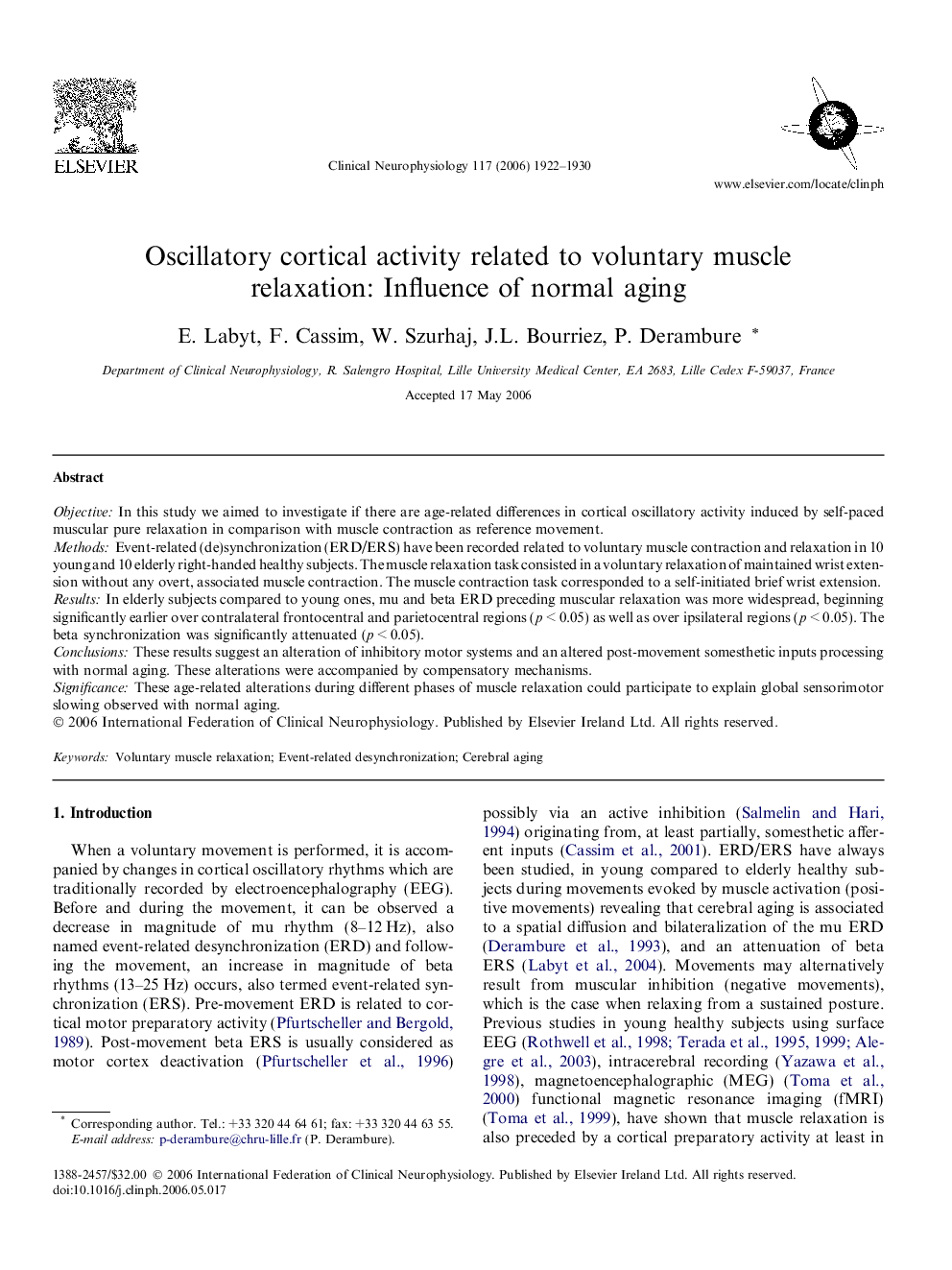| Article ID | Journal | Published Year | Pages | File Type |
|---|---|---|---|---|
| 3047806 | Clinical Neurophysiology | 2006 | 9 Pages |
ObjectiveIn this study we aimed to investigate if there are age-related differences in cortical oscillatory activity induced by self-paced muscular pure relaxation in comparison with muscle contraction as reference movement.MethodsEvent-related (de)synchronization (ERD/ERS) have been recorded related to voluntary muscle contraction and relaxation in 10 young and 10 elderly right-handed healthy subjects. The muscle relaxation task consisted in a voluntary relaxation of maintained wrist extension without any overt, associated muscle contraction. The muscle contraction task corresponded to a self-initiated brief wrist extension.ResultsIn elderly subjects compared to young ones, mu and beta ERD preceding muscular relaxation was more widespread, beginning significantly earlier over contralateral frontocentral and parietocentral regions (p < 0.05) as well as over ipsilateral regions (p < 0.05). The beta synchronization was significantly attenuated (p < 0.05).ConclusionsThese results suggest an alteration of inhibitory motor systems and an altered post-movement somesthetic inputs processing with normal aging. These alterations were accompanied by compensatory mechanisms.SignificanceThese age-related alterations during different phases of muscle relaxation could participate to explain global sensorimotor slowing observed with normal aging.
